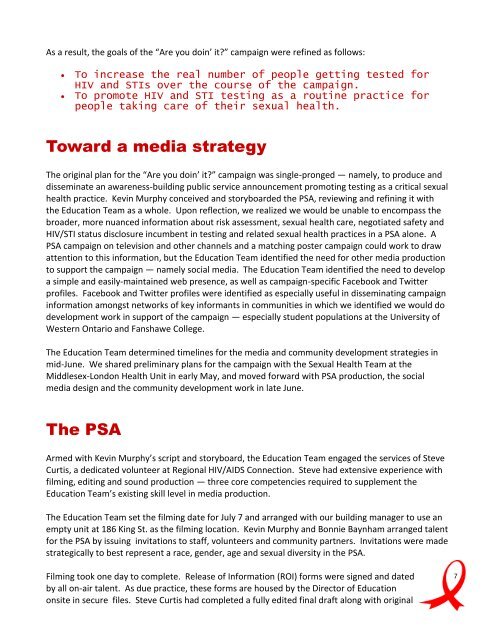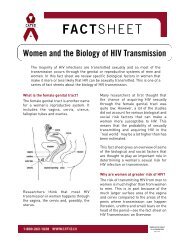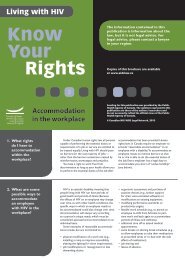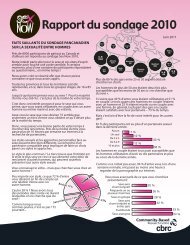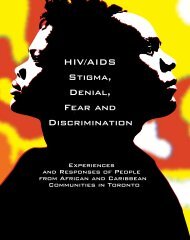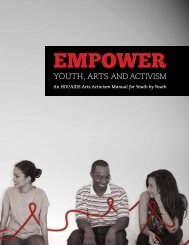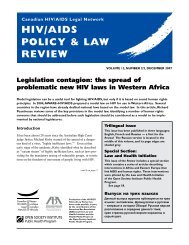âARE YOU DOIN' IT?â - Regional HIV/AIDS Connection
âARE YOU DOIN' IT?â - Regional HIV/AIDS Connection
âARE YOU DOIN' IT?â - Regional HIV/AIDS Connection
- No tags were found...
Create successful ePaper yourself
Turn your PDF publications into a flip-book with our unique Google optimized e-Paper software.
As a result, the goals of the “Are you doin’ it?” campaign were refined as follows:To increase the real number of people getting tested for<strong>HIV</strong> and STIs over the course of the campaign.To promote <strong>HIV</strong> and STI testing as a routine practice forpeople taking care of their sexual health.Toward a media strategyThe original plan for the “Are you doin’ it?” campaign was single-pronged — namely, to produce anddisseminate an awareness-building public service announcement promoting testing as a critical sexualhealth practice. Kevin Murphy conceived and storyboarded the PSA, reviewing and refining it withthe Education Team as a whole. Upon reflection, we realized we would be unable to encompass thebroader, more nuanced information about risk assessment, sexual health care, negotiated safety and<strong>HIV</strong>/STI status disclosure incumbent in testing and related sexual health practices in a PSA alone. APSA campaign on television and other channels and a matching poster campaign could work to drawattention to this information, but the Education Team identified the need for other media productionto support the campaign — namely social media. The Education Team identified the need to developa simple and easily-maintained web presence, as well as campaign-specific Facebook and Twitterprofiles. Facebook and Twitter profiles were identified as especially useful in disseminating campaigninformation amongst networks of key informants in communities in which we identified we would dodevelopment work in support of the campaign — especially student populations at the University ofWestern Ontario and Fanshawe College.The Education Team determined timelines for the media and community development strategies inmid-June. We shared preliminary plans for the campaign with the Sexual Health Team at theMiddlesex-London Health Unit in early May, and moved forward with PSA production, the socialmedia design and the community development work in late June.The PSAArmed with Kevin Murphy’s script and storyboard, the Education Team engaged the services of SteveCurtis, a dedicated volunteer at <strong>Regional</strong> <strong>HIV</strong>/<strong>AIDS</strong> <strong>Connection</strong>. Steve had extensive experience withfilming, editing and sound production — three core competencies required to supplement theEducation Team’s existing skill level in media production.The Education Team set the filming date for July 7 and arranged with our building manager to use anempty unit at 186 King St. as the filming location. Kevin Murphy and Bonnie Baynham arranged talentfor the PSA by issuing invitations to staff, volunteers and community partners. Invitations were madestrategically to best represent a race, gender, age and sexual diversity in the PSA.Filming took one day to complete. Release of Information (ROI) forms were signed and datedby all on-air talent. As due practice, these forms are housed by the Director of Educationonsite in secure files. Steve Curtis had completed a fully edited final draft along with original7


